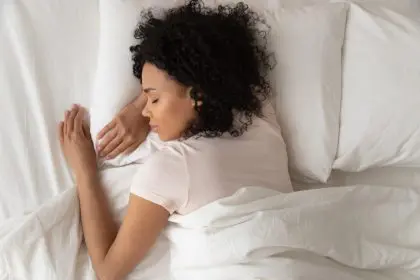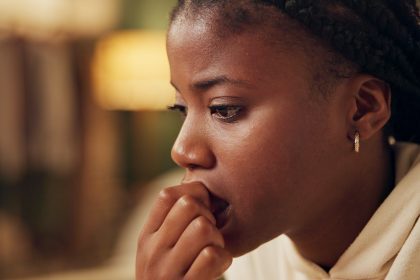Most adults have heard the standard recommendation of seven hours of sleep per night, but emerging research suggests this one-size-fits-all approach might not adequately address the unique sleep requirements women face. Studies have found that women typically sleep about 11 minutes longer than men each night—a small difference that hints at deeper biological and lifestyle factors affecting how female bodies process rest and recovery.
The biological sleep gap explained
The first reason behind women’s increased sleep needs involves hormonal fluctuations that occur throughout their lives. Unlike men, women experience dramatic shifts in estrogen and progesterone levels during menstrual cycles, pregnancy, and eventually menopause. These natural hormonal changes don’t just affect mood and energy—they fundamentally alter sleep architecture.
During the premenstrual phase, many women experience disrupted sleep due to hormonal shifts that can cause physical discomfort and mood changes. The days leading up to menstruation often bring symptoms like abdominal cramps, headaches, and breast tenderness that make finding comfortable sleep positions challenging. Combined with potential mood fluctuations, these physical symptoms can reduce both sleep quality and duration.
The second factor contributing to women’s increased sleep needs involves their circadian rhythms—the internal biological clocks regulating sleep-wake cycles. Research has found that women typically have slightly shorter circadian cycles than men, running closer to 24 hours while men’s cycles average 24.1 hours. This subtle difference means women’s bodies naturally want to go to bed earlier and wake earlier.
When forced to maintain later schedules due to work, family, or social obligations that don’t align with their biological timing, women may experience a form of chronic jet lag. This misalignment between internal clock and external schedule increases sleep debt over time, potentially requiring additional recovery sleep to compensate.
Brain processing differences require extra rest
The third reason women may need more sleep relates to how female brains process information and emotions. Neuroimaging studies have shown that women’s brains exhibit higher levels of activity during the day compared to men’s brains, particularly in areas involved with emotional processing and multitasking.
This increased brain activity has direct implications for sleep needs. Sleep serves as the brain’s essential recovery period, during which neural connections formed during waking hours undergo necessary maintenance and consolidation. The more intense the brain activity during the day, the more critical adequate sleep becomes for restoration.
Women’s tendency toward multitasking—whether by choice or necessity—means their brains often process multiple streams of information simultaneously throughout the day. While efficient in the moment, this cognitive juggling act requires additional neural resources and creates more connections that need nighttime processing.
The fourth contributing factor involves deep sleep quality. While women typically fall into deep sleep more quickly than men, they also tend to have more fragmented sleep throughout the night. This fragmentation means that despite spending more total time in bed, the restorative quality of that sleep may be compromised, necessitating longer overall sleep duration to achieve the same level of rest.
Life realities that disrupt female sleep patterns
The fifth aspect affecting women’s sleep needs stems from caregiving responsibilities that disproportionately fall to women. Mothers, particularly those with infants and young children, experience significant sleep disruption that can persist for years. Research tracking new parents found that while both experience sleep changes after having children, mothers’ sleep disruption tends to be more severe and longer-lasting than fathers’.
This caregiving role often extends beyond parenting to caring for aging parents or ill family members. These responsibilities frequently involve nighttime monitoring or assistance, creating a pattern of hypervigilance that makes achieving deep, restorative sleep challenging. Even when caregiving duties don’t require actual nighttime waking, the mental load of responsibility can keep women in lighter sleep states, ready to respond if needed.
The sixth factor relates to health conditions that disproportionately affect women. Conditions like thyroid disorders, fibromyalgia, and autoimmune diseases—all more common in women—can significantly impact sleep quality. These chronic health issues often bring symptoms like pain, temperature regulation problems, and anxiety that interfere with the ability to fall and stay asleep.
Women also experience higher rates of depression and anxiety, both strongly associated with sleep disturbances. This creates a bidirectional relationship where poor sleep worsens mental health symptoms, which in turn make quality sleep more elusive. Breaking this cycle often requires addressing both sleep habits and mental health simultaneously.
Hormonal transitions demand sleep adaptations
The seventh reason women may need additional sleep involves major hormonal transitions that occur throughout their lives. Pregnancy represents a particularly challenging period for sleep, with changing body shapes, frequent urination, and hormonal shifts all contributing to sleep disruption. Each trimester brings unique challenges, from early pregnancy nausea to third-trimester physical discomfort.
Postpartum recovery adds another layer of sleep complexity beyond the obvious demands of infant care. Hormonal fluctuations, physical recovery from childbirth, and potential mood disorders can all affect sleep architecture during this vulnerable period. Studies show that sleep disruption during this time may contribute to postpartum depression risk, highlighting the critical importance of finding ways to support maternal sleep.
Later in life, the menopausal transition creates perhaps the most significant sleep challenge many women face. Hot flashes and night sweats can wake women multiple times nightly, with some studies estimating that up to 80% of women experience sleep disruption during this transition. This period can last several years, creating chronic sleep deficits that may require both lifestyle adjustments and medical intervention.
The eighth factor affecting women’s sleep needs involves stress processing. Research indicates that women tend to ruminate more than men, mentally revisiting stressful events or worries. This tendency toward rumination makes it more difficult to quiet the mind at bedtime, potentially delaying sleep onset and reducing overall sleep quality.
Practical solutions for female sleep needs
Understanding these gender-specific sleep challenges allows for more targeted approaches to improving women’s sleep quality. While the standard recommendation of seven hours serves as a useful baseline, women experiencing significant hormonal transitions, caregiving responsibilities, or health issues may temporarily need eight to nine hours to achieve the same restorative benefits.
Creating consistent sleep timing proves particularly important for women due to their shorter circadian rhythms. Going to bed and waking at approximately the same times daily helps synchronize biological clocks with external schedules. When schedule variations become necessary, limiting them to 30-60 minutes helps minimize circadian disruption.
Temperature regulation deserves special attention for women experiencing hormonal fluctuations. Layered bedding allows for quick adjustments during night sweats, while moisture-wicking sleepwear helps manage discomfort. Keeping the bedroom cooler—around 65-68 degrees Fahrenheit—supports better sleep for everyone but proves especially helpful during menopausal transitions.
For women balancing caregiving responsibilities, implementing sleep shifts with partners whenever possible creates opportunities for each person to experience uninterrupted sleep cycles. When sharing nighttime duties isn’t possible, prioritizing naps—even short 20-minute rest periods—can help reduce sleep debt accumulation.
Addressing the mental load component of sleep disturbance often requires intentional pre-bedtime routines that signal to the brain that responsibilities have been temporarily set aside. Simple practices like creating next-day to-do lists before bed or establishing brief meditation routines help create mental boundaries between daytime obligations and nighttime rest.
Light management plays a crucial role in regulating women’s shorter circadian rhythms. Morning bright light exposure—ideally natural sunlight—helps anchor sleep-wake timing. Evening light reduction proves equally important, with amber-colored glasses or screen filters helping minimize blue light exposure that can delay natural melatonin production.
When additional support becomes necessary
While lifestyle modifications help many women address sleep challenges, persistent problems warrant professional attention. Sleep disorders like insomnia and restless legs syndrome affect women at higher rates than men and often respond well to appropriate treatment.
Tracking sleep patterns through apps or simple sleep diaries provides valuable information when consulting healthcare providers. These records help identify patterns and potential triggers that might otherwise go unnoticed, allowing for more targeted interventions.
For hormonal transition periods like perimenopause, discussing sleep concerns with healthcare providers opens doors to potential treatments ranging from lifestyle recommendations to hormone therapy when appropriate. The best approaches typically combine behavioral changes with medical support tailored to individual health profiles and preferences.
The relationship between sleep and mental health deserves particular attention for women experiencing anxiety or depression. Cognitive-behavioral therapy for insomnia (CBT-I) has shown impressive results for improving sleep quality without medication and often helps reduce anxiety and depression symptoms simultaneously.
Changing social expectations around rest
Beyond individual strategies, addressing women’s sleep needs requires broader conversations about how we value rest in our society. The expectation that women handle disproportionate shares of household management and emotional labor directly impacts their sleep opportunities.
Workplaces that recognize the importance of sleep health for all employees create more sustainable environments. Flexible scheduling, reasonable expectations around after-hours availability, and recognition of caregiving responsibilities all contribute to healthier sleep cultures.
Normalizing conversations about sleep needs helps reduce stigma around prioritizing rest. When influential women openly discuss protecting their sleep as essential for their health and performance, it sends powerful messages about valuing wellbeing over productivity at all costs.
The science regarding women’s sleep needs continues evolving, with researchers increasingly recognizing the importance of including female subjects in sleep studies. This growing body of gender-specific sleep research provides valuable insights for developing more nuanced recommendations beyond the one-size-fits-all seven-hour standard.
Understanding the biological, psychological, and social factors affecting women’s sleep creates opportunities for more personalized approaches to rest. By recognizing these unique needs and implementing targeted strategies, women can work toward sleep that truly restores both body and mind—benefiting not only their own health but also enhancing their capacity to fulfill the many roles they navigate daily.














